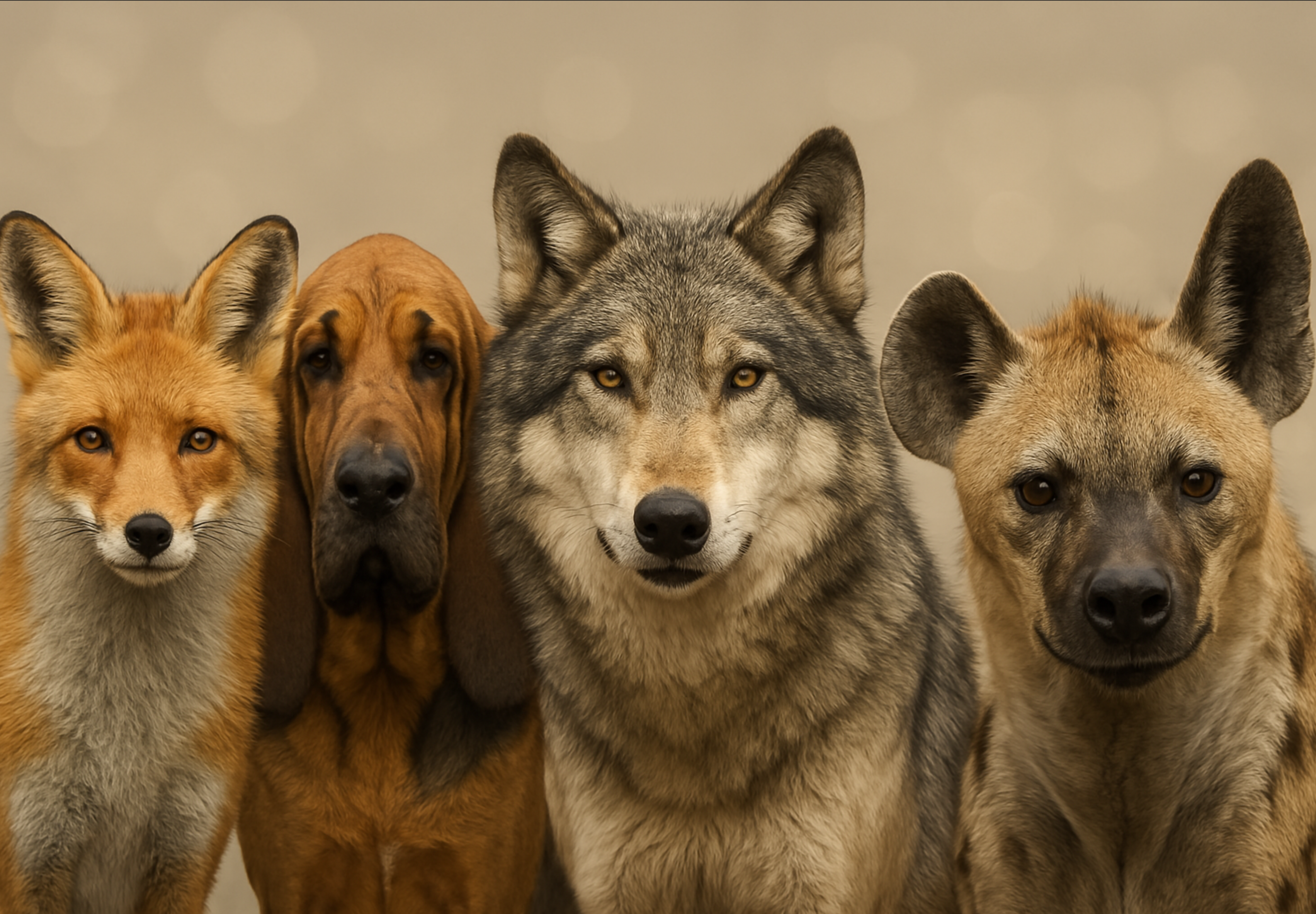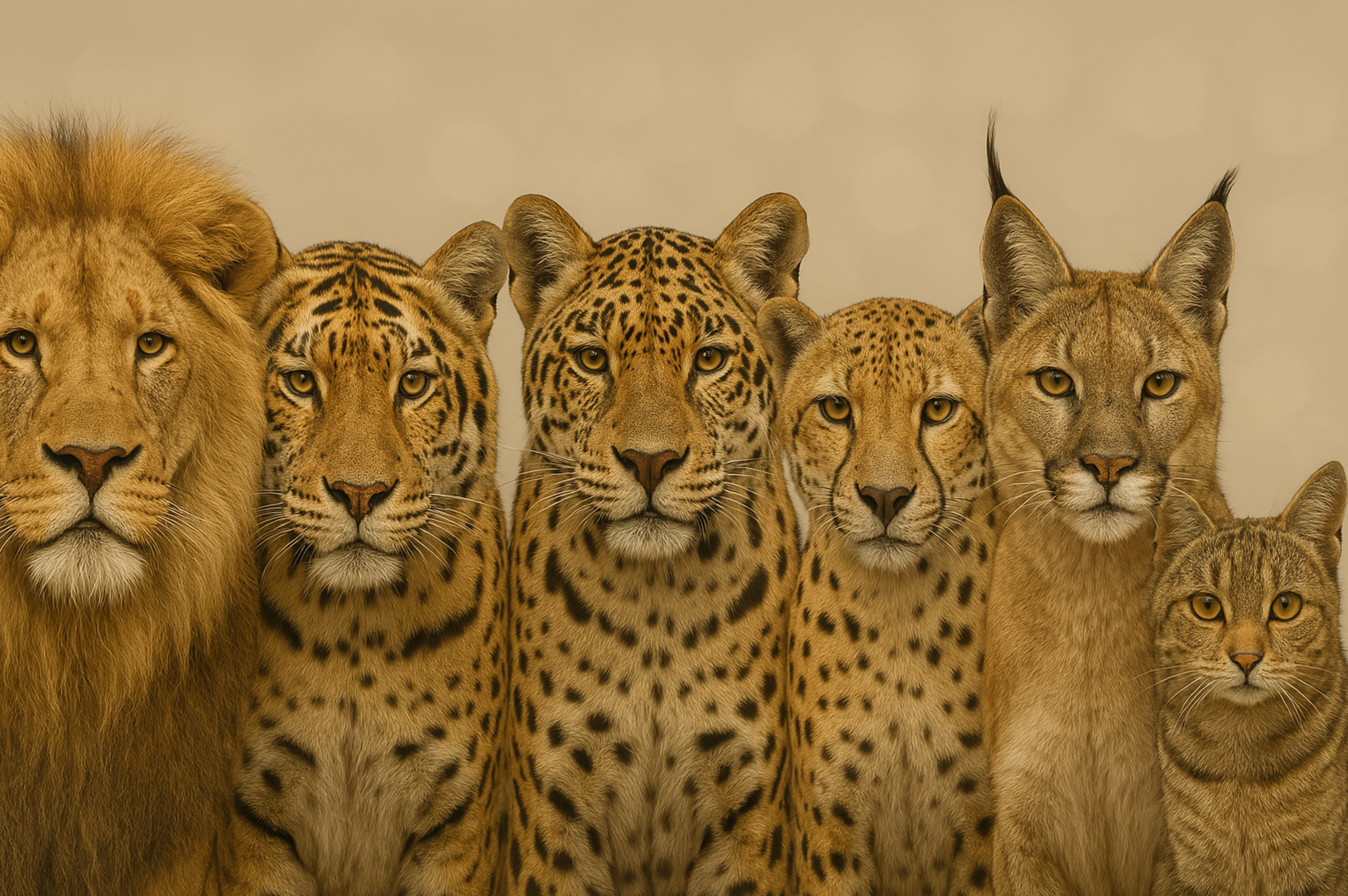Cats and Dogs
notes
llm
Clades for cats and dogs.
Introduction
This post presents simple ascii clade-style trees for Canidae (dogs) and Felidae (cats), including some extinct genera. The symbol † identifies an extinct group.
Feliformia → Felidae covering cats and relatives
Feliformia
├── Hyaenidae ← hyenas
├── Herpestidae ← mongooses
├── Viverridae ← civets, genets
└── Felidae (cats)
├── †Proailurus ← earliest known cat (~25 Mya)
├── †Pseudaelurus ← Miocene cats (~20–9 Mya)
├── Pantherinae (big cats)
│ ├── Panthera leo ← lion
│ ├── Panthera tigris ← tiger
│ ├── Panthera pardus ← leopard (black panther = melanistic form)
│ ├── Panthera onca ← jaguar (black panther = melanistic form)
│ └── Panthera uncia ← snow leopard
└── Felinae (small/medium cats)
├── Puma concolor ← cougar
├── Acinonyx jubatus ← cheetah
├── Lynx spp. ← lynxes
├── Caracal caracal ← caracal
├── †Homotherium ← "scimitar cat"
├── †Smilodon ← saber-toothed cat
└── Felis
├── Felis silvestris ← wildcat
└── Felis catus ← domestic catWhere are pathers? The term “panther” is a bit of a vernacular mess and it doesn’t refer to a separate species or genus. “Panther” usually means a black leopard (Panthera pardus, melanistic) or a black jaguar (Panthera onca, melanistic).
Caniformia → Canidae covering dogs and relatives
Carnivora
└── Caniformia
├── Ursidae ← bears
├── Pinnipedia ← seals, sea lions
├── Mustelidae ← weasels, otters
└── Canidae
├── †Hesperocyon ← early ancestral canid (~37 Mya)
├── †Leptocyon ← transitional genus (~25–10 Mya)
├── †Borophaginae ← "bone-crushing dogs" (~34–2 Mya)
└── Caninae (modern canids)
├── Urocyon ← gray fox
├── Vulpini (fox-like canines)
│ └── Vulpes ← red fox, arctic fox, etc.
└── Canini (dog-like canines)
├── †Eucyon ← small ancestral wild dogs (~10 Mya)
├── Cuon ← dhole
├── Lycaon ← African wild dog
└── Canis
├── Canis lupus ← gray wolf
│ └── Canis lupus familiaris ← domestic dog
├── Canis latrans ← coyote
├── Canis aureus ← golden jackal
└── †Canis dirus ← dire wolf
